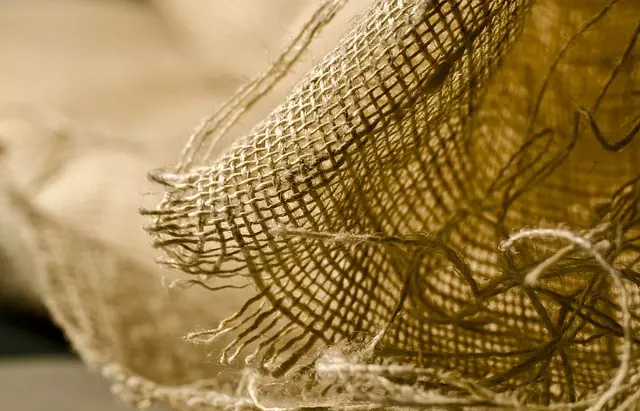Kratom (Mitragyna speciosa) cultivation in Utah's arid climate is a viable and profitable venture for local farmers, with careful site selection and soil management being critical for replicating its native Southeast Asian environment. Successful cultivation requires well-drained, organic-rich soils, efficient irrigation systems to mimic natural rainfall, and protective measures against excessive light and temperature fluctuations. Sustainable practices aligned with Kratom's needs and regulatory compliance are essential for a thriving Kratom industry in Utah. The state's unique microclimates, combined with the expertise of dedicated horticulturists, have successfully recreated the conditions necessary for high-quality Malaysian Kratom Buds to flourish. This has led to a significant expansion of Kratom cultivation beyond its traditional origins, with an emphasis on sustainable and ethical practices that honor the plant's heritage. The cultivation process in Utah is meticulous, focusing on organic methods, greenhouse technologies, and best practices throughout harvesting and processing to maintain potency and quality. Peak alkaloid content—especially mitraphyline and 7-hydroxymitraphyne—is achieved through precise timing for harvesting and careful drying and storage methods to preserve the Kratom's efficacy. The high standard of quality control in Utah's Kratom industry ensures consumers receive a premium product, reflecting the market's dedication to excellence in this specialized niche.
Exploring the emergence of Malaysian Kratom Buds in Utah’s agricultural landscape, this article delves into the promising potential for local farmers to cultivate this globally sought-after plant. From understanding the cultivation nuances that make ‘grow kratom Utah’ a viable venture to detailing the historical migration of Kratom from its Southeast Asian origins to the Beehive State, we journey through the rich tapestry of its cultivation in Utah’s diverse soil. Additionally, this piece outlines the critical steps for harvesting and processing Malaysian Kratom Buds to maintain their potency, ensuring that Utah farms can supply high-quality products to markets eager for sustainable, local sources.
- Unveiling the Potential of Growing Kratom in Utah: A Guide for Aspiring Farmers
- The Journey from Southeast Asia to the Beehive State: The History and Cultivation of Malaysian Kratom Buds in Utah's Soil
- Harvesting and Processing: Best Practices for Ensuring Potent Malaysian Kratom Buds from Utah Farms
Unveiling the Potential of Growing Kratom in Utah: A Guide for Aspiring Farmers

Growing Kratom (Mitragyna speciosa) in Utah presents a unique opportunity for aspiring farmers looking to enter the specialty crop market. The climate of Utah, characterized by its arid conditions and long sunny days, can be favorable for the cultivation of this tropical evergreen tree native to Southeast Asia. With careful consideration of site selection and soil preparation, farmers in Utah can establish a thriving Kratom farm.
The key to successful Kratom cultivation lies in replicating its natural environment as closely as possible. Prospective growers should select sites with well-drained soils rich in organic matter, akin to the loamy and sandy soils found in its native habitats. Utilizing appropriate irrigation systems to mimic its tropical rainfall patterns without water stress is also crucial. Additionally, understanding the plant’s preferred light conditions, which are typically high light levels but with protection from extreme sunlight, will ensure optimal growth. Temperature regulation, especially during frost-prone seasons, is another important factor to consider to protect the Kratom plants. By adhering to these cultivation practices and staying informed on the latest agricultural techniques for Kratom in Utah, farmers can capitalize on this lucrative niche market. Growers should also be aware of local regulations regarding the cultivation of Kratom to ensure compliance with state laws. With dedication and attention to detail, Utah’s diverse landscapes can become a new frontier for sustainable and profitable Kratom production.
The Journey from Southeast Asia to the Beehive State: The History and Cultivation of Malaysian Kratom Buds in Utah's Soil

Malaysian Kratom Buds have traversed a remarkable journey from their native Southeast Asian terrain to find a new home in the fertile soils of Utah. The rich, diverse ecosystems of Malaysia provide an ideal environment for Mitragyna speciosa, the scientific name for kratom, to thrive. This tropical evergreen tree is native to these regions and has been used traditionally by locals for centuries, primarily for its stimulating effects. As interest in kratom as a natural supplement and alternative wellness remedy grew globally, so did the cultivation of this plant outside its indigenous lands.
In Utah, a unique blend of microclimates and attentive horticulturists have made it possible to grow kratom under conditions that closely mimic those of its original habitat. The cultivation process in Utah is meticulous, ensuring that the soil, moisture levels, and temperature are conducive to the growth of Malaysian Kratom Buds. Local farmers and specialized kratom growers have become adept at adapting the plant to Utah’s climate, utilizing greenhouse techniques and organic practices that protect the integrity of the kratom alkaloids while yielding high-quality buds. This has resulted in a burgeoning industry for growing kratom in Utah, with many producers focusing on sustainable and ethical cultivation practices that honor the plant’s origins while ensuring its availability to those who seek its benefits.
Harvesting and Processing: Best Practices for Ensuring Potent Malaysian Kratom Buds from Utah Farms

In the rich soils and favorable climates of Utah, the cultivation of Malaysian Kratom buds has gained significant traction among local growers. To ensure the potency and quality of these Kratom buds, adhering to best practices during both harvesting and processing stages is paramount. The climate in Utah mirrors certain conditions found in the native habitats of Malaysia, providing an optimal environment for Kratom cultivation. Growers must carefully monitor the maturation process, ensuring that the plants reach peak alkaloid content before harvest. This involves regularly assessing the leaves, particularly the buds, to determine the ideal time for picking, which typically occurs when the leaves exhibit a balance of mature and immature tissues, maximizing both mitraphyline and 7-hydroxymitraphyne concentrations—the key alkaloids in Kratom.
Upon harvest, the processing method significantly influences the final potency of the Kratom buds. After collection, the leaves undergo a drying process that must be executed with precision to preserve the alkaloid integrity. The best practices recommend using controlled drying techniques such as low-temperature dehydration or air-curing methods that avoid excessive heat, which can degrade alkaloid content. Post-harvest, the dried Kratom buds should be stored in cool, dark conditions to prevent oxidation and maintain their efficacy. This meticulous approach from grow kratom Utah operations ensures that consumers receive a product of the highest quality, reflecting the dedication and expertise of the cultivators in this emerging industry.
In conclusion, the emergence of Malaysian Kratom Buds in Utah represents a fascinating chapter in agricultural diversification and herbal cultivation within the state. Aspiring farmers interested in growing Kratom in Utah can leverage the insights provided to embark on this unique and potentially lucrative endeavor. The journey from Southeast Asia to the Beehive State has not only enriched the local agriculture but also opened new avenues for health-conscious consumers. With careful attention to harvesting and processing methods, Utah farms can produce potent Malaysian Kratom Buds that are both competitive and compliant with regulations. As this guide demonstrates, the potential for growing Kratom in Utah is robust, offering a promising outlook for those dedicated to this specialized crop.






